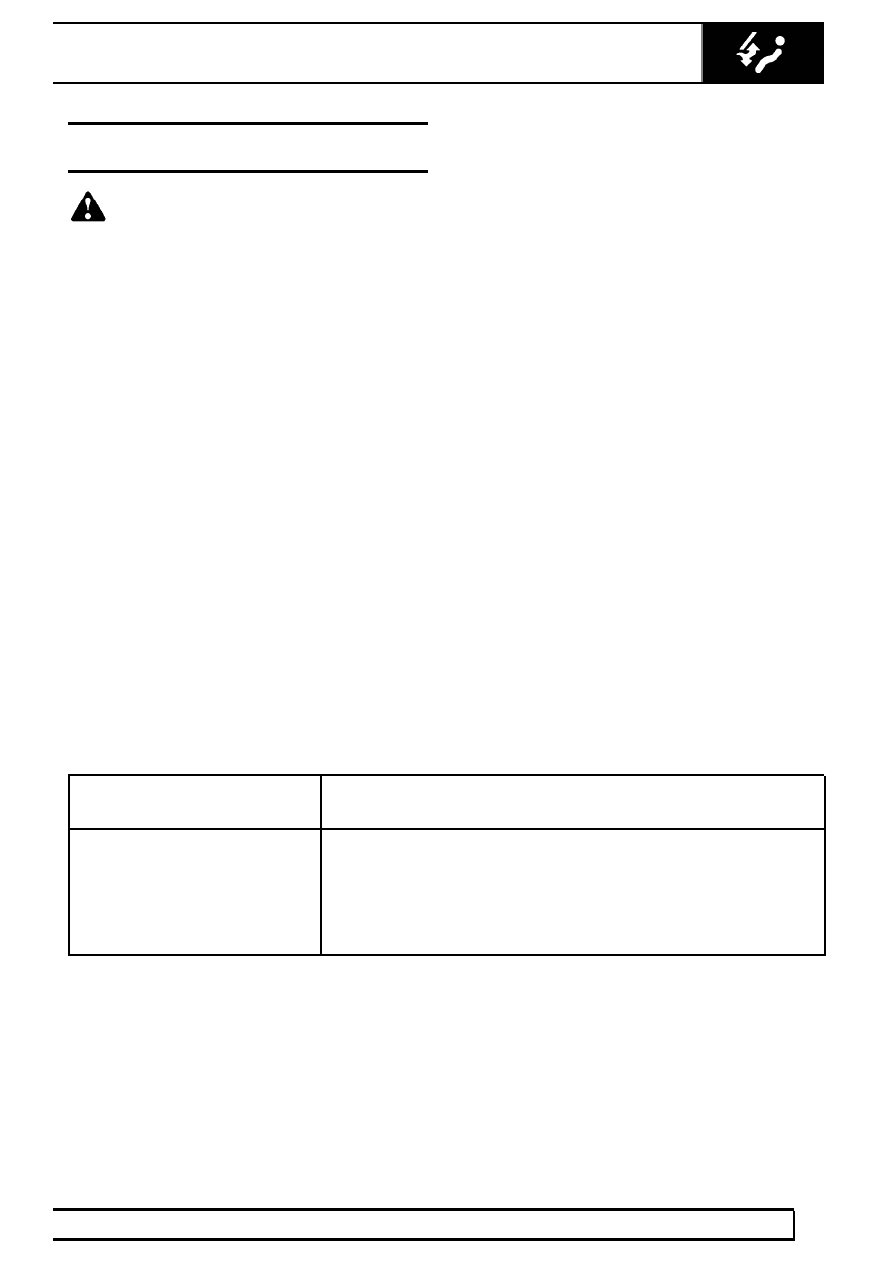Defender 90 NAS. Manual - part 90

AIR CONDITIONING
5
ADJUSTMENT
AIR CONDITIONING SYSTEM - PERFORMANCE
TEST
WARNING: R134a is hazardous
See
Repair, General Precautions .
Carry out this test with bonnet and doors or windows
open, air conditioning switched on, temperature
control set to cold and blower at maximum speed. Set
the air supply control to supply fresh air.
1. Close low pressure valve on refrigerant station.
2. Close high pressure valve on refrigerant station.
3. Connect a Refrigerant Station to the high and
low pressure servicing connections.
4. Insert dry bulb thermometer into cold air outlet
and position dry and wet bulb thermometer close
to outside air inlet.
Do not spill water from the wet thermometer
(psychrometer).
5. Start engine and run it at 1500 rev/min for 10
minutes with air conditioning switched on.
6. Read both pressure gauges and thermometers.
Check readings against table below with
humidity between 60% and 80%.
7. Switch off air conditioning, stop engine,
disconnect test equipment.
Performance range
Intake temperature
Outlet temperature
Low pressure
High pressure
68
°
F
41 - 50
°
f
20 - 23 lbf/in
2
116 - 190 lbf/in
2
20
°
C
5 - 10
°
C
1.4 - 1.6 bar
8.0 - 13 bar
75
°
F
45 - 60
°
F
21 - 28 lbf/in
2
130 - 200 lbf/in
2
25
°
C
7 - 15
°
C
1.5 - 2.0 bar
9.0 - 14 bar
85
°
F
46 - 68
°
F
26 - 40 lbf/in
2
190 - 230 lbf/in
2
30
°
C
8 - 20
°
C
1.8 - 2.8 bar
13 - 16 bar
95
°
F
52 - 72
°
F
36 - 52 lbf/in
2
230 - 270 lbf/in
2
35
°
C
11 - 22
°
C
2.5 - 3.5 bar
16 - 19 bar
Table 1
Ambient
Compound Gauge
High Pressure
Temperature
Readings
Gauge Readings
°
C
°
F
bar
lbf/in
2
bar
lbf/in
2
16
60
1,3-1,4
15-20
6,9-10,3
100-150
27
80
1,4-1,7
20-25
9,7-13,1
140-190
38
100
1,7-2,1
25-30
12,4-15,5
180-225
43
110
2,1-2,4
30-35
14,8-17,2
215-250